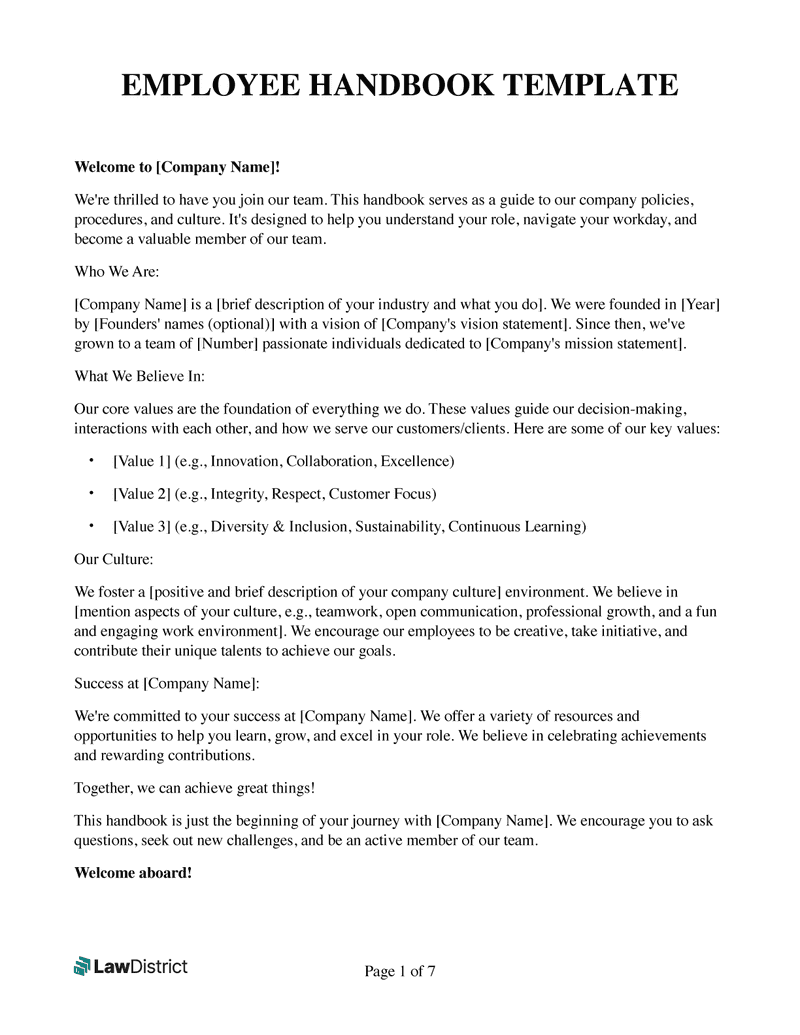An Employee Handbook is a document that outlines the policies, procedures, and expectations between an employer and its employees.
It serves as a guide for employees to understand their rights, responsibilities, and the company's standards of conduct.
This essential document covers a wide range of topics, including:
- Company culture
- Values
- Legal obligations of both the employer and the employee
- Workplace policies
- Employee benefits
Unlike an employment contract that outlines the specific terms of an individual's employment, the Employee Handbook provides a broad overview of the company's operational practices and expectations.
Use our customizable Employee Handbook template as a reliable foundation to help you develop a clear and comprehensive guide for your employees.
Types of Employee Handbooks
Employee policy handbooks are tailored to suit organizational needs, reflecting company size, culture, and industry specifics. Here are common types:
- Standard Employee Handbook: Suitable for most businesses, covering general policies and company expectations.
- Small business Employee Handbook: Focuses on essentials for smaller workforces, with simplified policies.
- Corporate Employee Handbook: Addresses extensive policies across departments in larger corporations.
- Industry-specific Employee Handbook: Tailored to meet unique operational and regulatory requirements of specific industries.
- Digital Employee Handbook: Online or intranet-based, easily updated, and can include interactive elements.
- Culture-focused Employee Handbook: Highlights company culture and values alongside standard policies.
Choosing the right type of Handbook is key to effectively communicating expectations and fostering a positive workplace culture.
